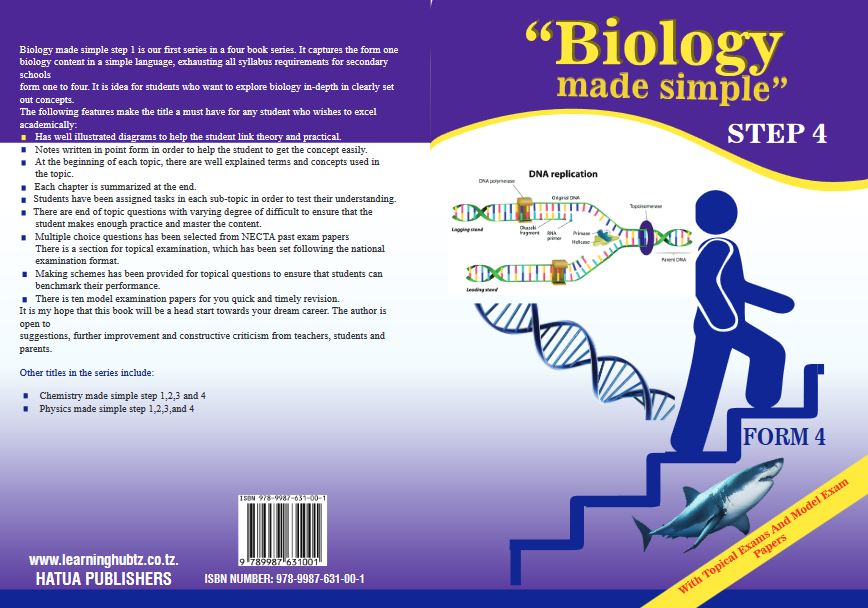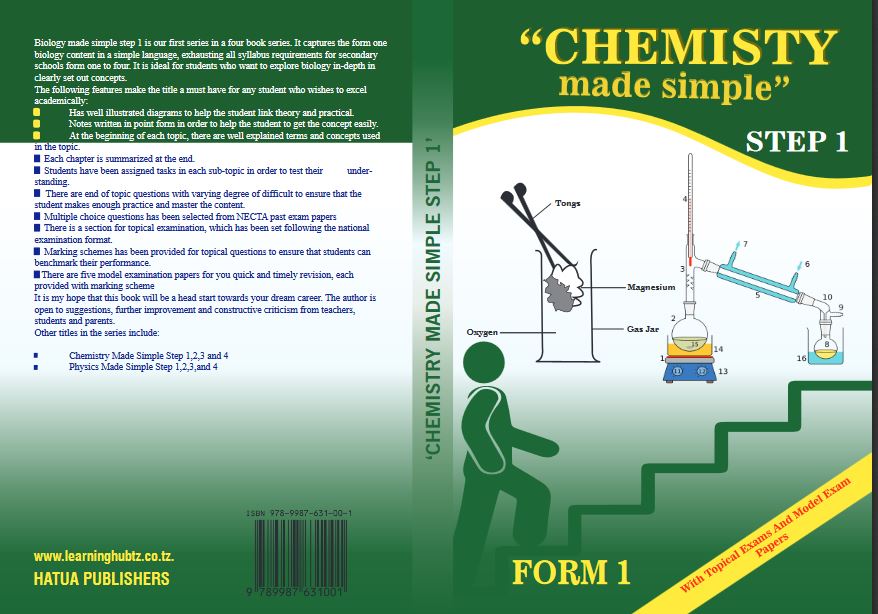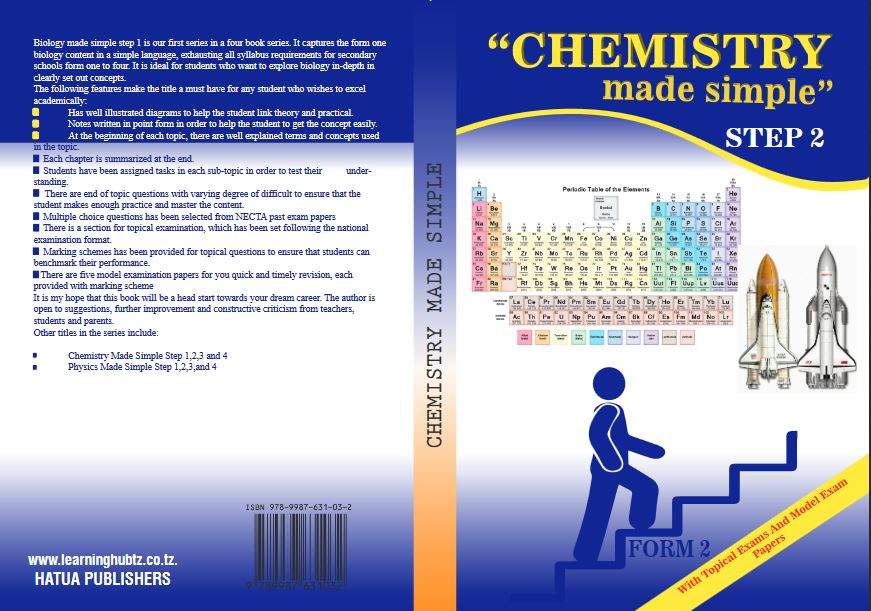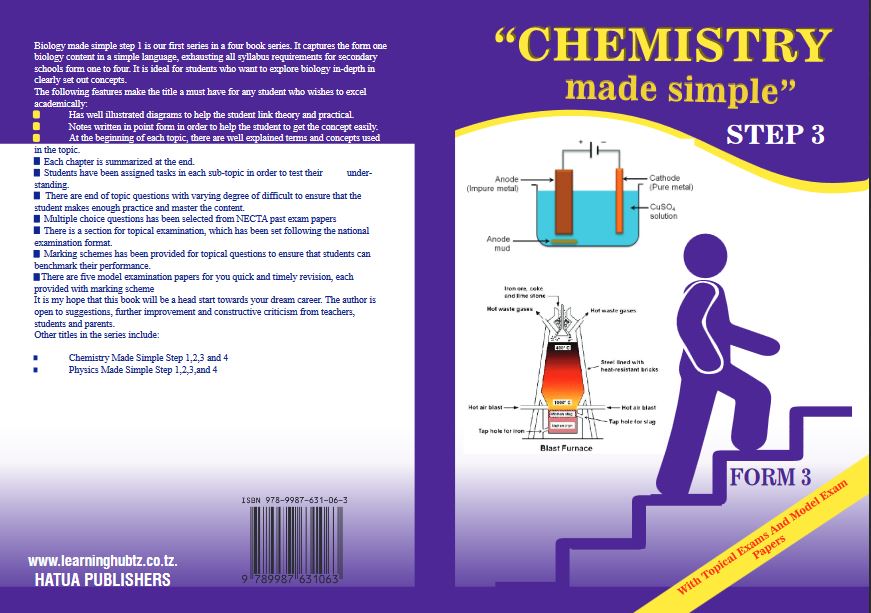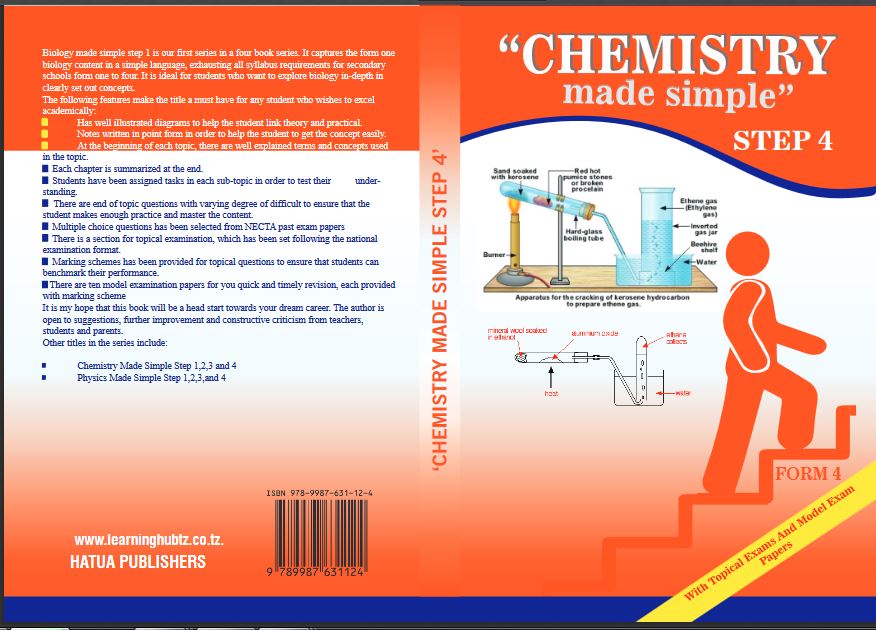PRESIDENT OFFICE REGIONAL ADMNISTRATION
AND LOCAL GOVERNMENT
SECONDARY EXAMINATION SERIES
COMPETENCE BASED ASSEMENT
FORM FOUR
TERMINAL EXAMS
061 COMMERCE
Time: 2:30 Hours MAY, 2023
Instructions
- This paper consists of 11 (eleven) questions in sections A, B and C.
- Answer ALL questions in section A and B, and only TWO (2) questions in section C.
- Non-programmable calculator maybe used in the examination room
- Cellular phones and any unauthorized materials are not allowed in the examination room
- Write your examination number on every page of your answer booklet(s)
Answer all questions in this section
- For each of the items (i) – (x), choose the correct answer from among the given alternatives and write its letter beside the item number in the answer sheet provided.
- Entrepreneurship is a process of creating a business idea and converting that idea into a marketable product for the purpose of generating profit. What might not be a characteristic of a successful entrepreneur among the following?
- Confidence
- Adaptability
- Honesty
- Warehousing
- For transportation of goods and services to be successful either using water, air or land, which among the following elements is not essential?
- The way
- The terminal
- Containerization
- Method of propulsion
- In which kind of utility can cotton be shifted from extraction point to manufacturers point?
- Time utility
- Possession utility
- Place utility
- Form utility
- Which of the following method would Tanzania adopt if she wants completely to restrict importation of rice from Japan?
- Imposing heavy import duties
- Total ban
- Fixing import quotas
- Provision of customs drawback.
- Malima is a large-scale retailer who wants to identify the fast-moving goods in his business. Which stock calculation will Malima apply to arrive at the correct identification?
- Which among the following is not a feature of commerce?
- Exchange motive to needs and wants
- Profit motive towards needs and wants
- Unsatisfied needs and wants
- Economic activities
- A quantity of goods a person is willing to offer for sale at a given price in a given period of time is known as
- Supply
- Demand
- Joint supply
- Joint demand
- “A manager should have the right to punish a subordinate for willfully not obeying a legitimate order but only after sufficient opportunity has been given to the subordinate to present defense about the case” Which principle is being reflected?
- Authority and responsibility.
- Division of work.
- Unity of command.
- Discipline.
- Suppose the tax authority collects tax from citizens who do not know how much to pay, where to pay, and how to pay. Which principle of taxation is the authority violating?
- Convenience.
- Equity.
- Certainty.
- Flexibility.
- By which principal can an insured be returned to his/her original financial position?
- Proximate cause
- Underwriting
- Subrogation
- Indemnity
- Choose the correct letter which is representing the correct domestic trade document from group B to match with the explanations in group A and write against the item number in the answer sheet provided.
| LIST A | LIST B |
|
|
SECTION B (54 Marks)
Attempt ALL questions from this section
- a) Describe the term re-order level
- Stone and Sand are partners who are specialized in supplying cement at bricks village. Their daily sales are usually 1,000 bags of cement of 15,000/= TZS @.100 bags are retained in the business as buffer stocks. If it takes 3 weeks to receive new deliveries from Tanga Cement Company limited, how much should be ordered by that business?
- Despite the problems associated with small scale retail businesses, they are the most common type and have continued to exist alongside large-scale retail businesses. Briefly explain six (6) reasons for this.
- There are different sources of capital which a private company can use to get capital. Some of them are selling of shares and debentures. With six points show how can a share be differentiated from a debenture?
- Ms. Margery has decided to start a poultry project which will cost 50,000,000/=. He decides to get a loan from CRDB Bank. What factors will the bank manager take into account before granting a loan? Defend by giving out six (6) factors.
- For the communication to be successful, it depends on the number of factors considered by the sender of the message on a choice of certain media. With examples, discuss six (6) factors necessary to be considered when choosing communication media.
- If the price of vitenge is constant, what are other six (6) factors that may cause the change in demand of Vitenge in the market?
SECTION C: (30 MARKS)
Answer any two (2) questions from this section
- Many graduates in Tanzania are faced with unemployment problem, suppose the government provides them with loan capital and conducive places for business. Explain three (3) benefits and three (3) demerits those entrepreneurs could get for being self-employed
- The members of parliament of Mbuni country argued that, being isolated from other countries is an advantage as it omit overdependence and depression. As an expert in commerce, basing on the merits of international trade, explain to them on why should international trade be applied by countries? Give six points.
- Which factors should be considered by the marketing officer in choosing a suitable means of advertising? Analyze six points
FORM FOUR COMMERCE EXAM SERIES 156
FORM FOUR COMMERCE EXAM SERIES 156
THE PRESIDENT’S OFFICE
MINISTRY OF EDUCATION, REGIONAL ADMINISTRATION AND LOCAL GOVERNMENT
COMPETENCE BASED SECONDARY EXAMINATION SERIES
COMMERCE TERMINAL EXAMINATION
FORM FOUR -2022
Instructions
- This paper consists of sections A, 13 and C with a total of ten (10) questions.
- Answer all questions in sections A and B and two (2) questions from section C.
- Section A carries twenty (20) marks, section B fifty (50) marks and section C carries thirty (30) marks.
- Cellular phones and any unauthorized materials are not allowed in the examination room.
- Write your Examination Number on every page of your answer booklet(s).
SECTION A (20 Marks)
Answer all questions in this section.
- Mr. Bukaba wants to engage in hire purchase but he does not know its consequences. Identify one consequence that he can face.
- He can own the property soon after payment of the first installment.
- He can own the property soon after payment of the last installment.
- Once he failed to pay other installments the seller cannot repossess the goods.
- Once he failed to pay other installments the seller can repossess the goods.
- He can pay all the amount required in cash and possess the property.
- Suppose you have been employed in a bonded warehouse and one of the customers needs to collect his car from the warehouse. Which tax would you require the customer to pay before releasing the car?
- Property tax
- Export duty
- Exercise duty
- Value added tax
- Custom duty
- Mrs. Makuchi as house wife prepared a fresh fruits juice for her kids' consumption. In which type of production does the activity done by Mrs. Makuchi be grouped?
- Primary production
- Tertiary production
- Personal services
- Direct production
- Indirect production
- Suppose you are a marketing manager who wants to satisfy the target market at the same time achieves the marketing objectives. Which elements of market mix would you consider?
- Branding, grading, standardizing and pricing
- Product, price, brand name and promotion
- Package, price, product and place
- Product, price, promotion and place
- Brand name, package, packaging and product
- You have learnt about the factors for the change in quantity demanded and the factors for the change in demand. Which factor would you opt for change in quantity demanded?
- Change in weather
- Change in fashion
- Change in price of a commodity
- Change in technology
- Change in price of related commodities
- Identify the appropriate international trade term which fit for the following transaction; Tanzania has paid Tsh. 30 million as payment of interest of loan from Canada.
- Terms of trade
- Balance of trade
- Deficit balance of payment
- Invisible trade
- Visible trade
- Why elimination of a wholesaler from the channel of distribution does not affect the flow of goods from the manufacturer to the final consumer?
- The wholesaler has very small amount of capital.
- The wholesaler performs the only selling function.
- All goods involved in the channel of distribution are branded.
- In regardless of the financial position, manufacturer can sell direct to final users.
- The wholesaler's functions can be performed by other agents
- A business manager must obey the management functions so as to attain the business goals. In which function does a manager is involved in manpower planning and recruitment?
- Staffing
- Directing
- Planning
- Organizing
- Controlling
- Suppose you are self- employed in carpentry activities but you have spent two days to produce dining table for your family; In which category does the production of such table be grouped?
- Indirect production
- Direct production
- Tertiary production
- Direct services
- E Indirect services
- How can different drinking water industries in Tanzania differentiate the same products they offered for sale in the market?
- Through packages
- Through grading %
- Through branding
- Through standardizing
- Through price
- Some entrepreneurs debated that internal motivation in entrepreneurship is wastage of resources. Which statement evidences that internal motivation is an important aspect in entrepreneurship?
- It creates employment opportunity to workers.
- It reduces regional development imbalance.
- It stimulates employees to accomplish the desired goals.
- It assists decision making in a business.
- It encourages consumption of local resources in production.
- Suppose you have attended a commercial debate with the motion "aids to trade is not necessary element of commerce". Which option will you choose as correct to oppose the motion?
- Aids to trade support production and not commerce.
- Aids to trade attract more buyers hence, low price for the goods.
- Aids to trade facilitate trade to take place smoothly.
- Aids to trade act as a link between commerce and production.
- Aids to trade is used to determine price of the goods produced.
- Suppose you have bought medicine from India and they are urgently needed to serve the life of patients in Tanzania, which mode of transport would you consider to be appropriate ?
- Road transport
- Air transport
- Water transport
- Railway transport
- Pipeline transport
- Under which classification the services provided by teachers, lawyers and police to their customers are categorized?
- Direct services
- Auxiliary services
- Personal services
- Public services
- Indirect services
- You have been engaged in selling fresh beans business and you want to increase sales through advertising. Which factor will you consider in advertising your product?
- The income of the competitors.
- The steady supply of the products to be advertised.
- The income tax to be charged on the products.
- The nature of the product to be advertised.
- The purchasing power of your customer.
2. Match the descriptions on taxation terminologies in Column A with the corresponding terminology in column B BY Writing the letter of the correct terminology beside the tem number in the answer booklet provided;
| Column A | Column B |
|
|
SECTION B (50 Marks)
Answer all questions in this section.
3. (a) Describe five qualities of a good entrepreneur.
(b) Mr. Mkuu started business two years ago as a soft drink supplier, now his business has collapsed. As an expert in commercial subject, give him four possible causes of his business failure.
4. (a) Mr. Ramsi a businessman who had an account with CRDB Bank in Arusha branch issued a cheque payable to Mr. Karim amounting to Tsh. 150,000/2 only. Use the information given to analyse the three main parties to a cheque involved in this transaction.
(b) Assume one of your teachers is a businessman and he had received two crossed cheques from one of his customers. One of the cheques bearing the words "Not Negotiable" and the other one "Account payee only". Briefly explain to him what the terms "Not negotiable" and "Account payee only" imply?
5. (a) (i) Briefly explain the term cheque.
(ii) Elaborate three main parties to a cheque.
(b) Whenever someone buys goods or services, payment can be made by either cash or cheque. Describe five advantages of paying the debts by using cheques.
6.(a) Briefly explain five services that are rendered by middlemen to producers in the chain of distribution.
(b) Give five ways in which land is useful as a factor of production.
7. (a) Mr. Konge insured his car against accident but he thought that the principles of utmost good faith, insurable interest and indemnity are not necessary principles in insurance. Describe the necessity of these three principles of insurance to Mr. Konge.
(b) Mr. Pokea received a cover note after paying the premium to insurer but did not know why the insurer issued him such a document. Give him two functions of the document received.
SECTION C (30 Marks)
Answer two (2) questions from this section.
8. It is often argued that in a commercial system such as that existing in Tanzania a wholesaler cannot be eliminated. Justify.
9. Name and explain six economic effects of taxation.
10. Suppose your name have been shortlisted by SIDO (Small Industries Development Organization) as a job applicant under research and development department. An interviewer asked you to explain the contributions of innovation towards business success. What would be your response? (Give six points)
FORM FOUR COMMERCE EXAM SERIES 90
FORM FOUR COMMERCE EXAM SERIES 90
THE PRESIDENT’S OFFICE MINISTRY OF EDUCATION, LOCAL ADMINISTRATION AND LOCAL GOVERNMENT
COMMERCE TERMINAL EXAMINATION-MAY
FORM FOUR
Time 3:00 Hours MAY 2020
Instructions
- This paper consists of sections A, B and C with a total of ten (10) questions.
- Answer all questions in sections A and B and two (2) questions from section C.
- Calculators, cellular phones and any unauthorized materials are not allowed in the examination room.
- Write your Examination Number on every page of your answer booklet(s).
SECTION A. 20 MARKS
Answer all questions in this section.
1. For each of the items (i) - (x), choose the correct answer from among the given alternatives and write its letter beside the item number in your answer booklet(s) provided.
(i) A certificate of incorporation is a document that;
- governs the relationship of the company with outsiders.
- empowers the company to commence business activities.
- gives a company a legal existence.
- lays down rules and regulations of the internal organization of a company.
- invites offer from the public for subscription of shares of a company.
(ii) Which of the following is not the aim of marketing boards?
- Finding a satisfactory market.
- Stabilizing prices of agricultural products.
- Ensuring a steady supply of the commodity all through.
- Encouraging competition between marketing boards.
- Assisting farmers with collection and storage of their produce.
(iii)Goods can mainly be classified as
- durable goods and perishable goods
- consumer goods and producer goods
- consumer goods and economic goods
- producer goods and free goods
- producer goods and economic goods.
(iv) A cheque which is presented to the payee before the date on it is called
- dishonoured cheque
- Crossed cheque
- stale cheque
- post-dated cheque
- open cheque.
(v) Which one of the following is the disadvantage of departmental store to the seller?
- Wide choice of products.
- Convenience in shopping.
- Extensive use of advertising.
- Careful selection of goods.
- Services to customers.
(vi Which one of the following is a method used by government to protect consumers?
- Fixing minimum prices.
- Fixing maximum prices.
- Fixing minimum profits.
- Fixing maximum profits.
- Fixing minimum and maximum prices.
(vii)The warehouses which are situated at terminals of railway, air ports and sea ports are known as
- public warehouse.
- bonded warehouse
- wholesaler’s warehouse
- manufacture’s warehouse.
- private warehouse.
(viii) A special crossing is a type of crossed cheque which consists of
- two parallel lines with no words between them.
- two parallel lines with words ‘and Company’ between them
- two parallel lines with drawee’s name between them
- two parallel lines with drawer’s name between them
- two parallel lines with endorser’s name between them.
(ix) A letter of credit is sent by
- exporter’s bank to a correspondent bank
- improter’s bank to a correspondent bank
- importer to exporter
- a central bank to a correspondent bank
- importer’s agent to the exporter’s agent.
(x) The group which represents a broad classification of human occupations is
- Commerce, production and aids to trade.
- Trade and aids to trade.
- Banking, insurance and transportation.
- Extractive, manufacturing and constructive industries.
- Industrial and tertiary.
2. MATCHING ITEMS QUESTIONS
Match the items in Column A with the responses in Column B by writing the letter of the correct response beside the item number in your answer booklet.
| Column A | Column B |
| (i) Engaged only on limited range of stock while combining selling, delivery and collection in one operation. (ii) Engaged in supplying a certain type of goods to a certain type of retail stores. (iii) Engaged in buying and selling of goods from different producers to retailers. (iv) Selling a particular type of goods but offer greater variety within their particular field. (v) Engaged in showing catalogues, and price lists to retailers to persuade them to buy the goods. (vi) Engaged in selling to the wholesalers’ warehouse that require them to pick what they want. (vii) Engaged in selling goods to the public without reserves. (viii) Engaged in selling of goods to the retailers to different areas in a given state. (ix) Engaged in buying and selling of goods on their capital and perform all activities in the business. (x) Engaged in collection and delivery of goods on behalf of others. |
|
SECTION B (40 Marks)
Answer all questions in this section.
3. (a) Elaborate five disadvantages of departmental stores.
(b) Briefly explain five benefits of installments selling to the seller.
4. (a) Giving five points, discuss the importance of commerce to a developing country.
(b) Describe five functions of capital as factor of production.
5.(a) (i) What is meant by a wholesaler?
(ii) briefly explain the term bill of exchange.
(b) explain eight functions of wholesalers.
6. (a) Describe five advantages of a retailer refusing credit sales to his customers.
(b) Explain five reasons behind consumer protection.
SECTION C
7. (a) (i) Describe three importance of management in business organization.
(ii) What is the different between planning and staffing in relation to management?
(b) (i) Describe the term organization.
(ii) With four points, explain the importance of organization in any business.
(c)Mr Kenge is a supervisor in printing department of a certain organization. His department has 120 subordinates. Which principle of organization had been violated for him to supervise large number of subordinate? Justify your answer by stating clearly the principle violated.
8. (a) What is an entrepreneur?
(b) Describe the functions of an entrepreneur
(c) Describe five factors that contribute to failure of many small businesses.
9. Differentiate the following commercial terms:
(a) Formal communication and informal communication.
(b) Oral communication and written communication.
(c) Audio media and audio visual media.
(d) Internal communication and external communication.
(e) Fax and internet.
10. (a) Explain five roles of transport to the development of a country.
(b) Elaborate two advantages and three disadvantages of water transport.
FORM FOUR COMMERCE EXAM SERIES 14
FORM FOUR COMMERCE EXAM SERIES 14
Hub App
 For Call,Sms&WhatsApp: 255769929722 / 255754805256
For Call,Sms&WhatsApp: 255769929722 / 255754805256
 For Call,Sms&WhatsApp: 255769929722 / 255754805256
For Call,Sms&WhatsApp: 255769929722 / 255754805256



